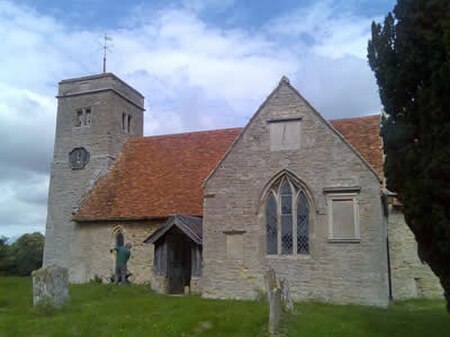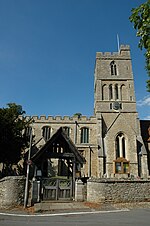Knotting, Bedfordshire
Bedfordshire geography stubsBorough of BedfordFormer civil parishes in BedfordshireVillages in Bedfordshire

Knotting is a village and former civil parish, now in the parish of Knotting and Souldrop, in the Bedford district, in the ceremonial county of Bedfordshire, located near the border with Northamptonshire. Nearby places are, Sharnbrook, Podington, Odell, Melchbourne, Yelden, Newton Bromswold, Souldrop and Rushden over the border in Northamptonshire. In 1931 the parish had a population of 114. On 1 April 1934 the parish was abolished to form "Knotting and Souldrop".
Excerpt from the Wikipedia article Knotting, Bedfordshire (License: CC BY-SA 3.0, Authors, Images).Knotting, Bedfordshire
Geographical coordinates (GPS) Address Nearby Places Show on map
Geographical coordinates (GPS)
| Latitude | Longitude |
|---|---|
| N 52.25 ° | E -0.5333 ° |
Address
MK44 1AD , Knotting and Souldrop
England, United Kingdom
Open on Google Maps








